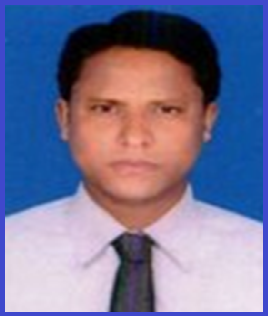JOURNALS || ASIO Journal of Humanities, Management & Social Sciences Invention (ASIO-JHMSSI) [ISSN: 2455-2224]
ARTICLE DESCRIPTION:
ARTICLE TYPE: Research Article
dids/doi No.:12.2015-81145222
dids link: http://dids.info/didslink/07.2016-54532272/
ABSTRACT:
Kandhamal, one of the tribal districts of Odisha, is regarded as the classic home to tribe-caste conflict since the early nineties. The conflict is basically between adivasi Kandhas or the scheduled tribes and dalit Panas or the scheduled castes. The main reason behind this conflict is the conversion of dalit Panas into Christianity which was opposed by the radical groups of Sangh Parivar. Thus, there has been a constant competition between the Christian missionaries and the Sangh Parivar to bring these two vulnerable communities into their respective faiths. The Hindu radical groups supported the tribal Kandha community by reconverting them to Hinduism and used them against the dalit Christians. The main target of the Sangh Parivar is to counter the spread of Christianity in Kandhamal district so that it will enable them to establish their ideology of Hindutva and cultural hegemony of Hinduism. This strategy of Sangh Parivar finally gave rise to two famous communal riots in Kandhamal in 2007 and 2008 where the Christian community and their places of worship were the main targets. In this paper, an attempt has been made to find out the root causes of tribe-caste conflict and how this conflict is being engineered by the Sangh Parivar in creating a fear of constant insecurity for the Christian people.
Keywords: Communal Riot, Hindutva, Kui Language, Meriah, Tribe-Caste Conflict
[1] Census of India, 2011, Orissa Series 22, Director of Census Operations, Odisha, Available from: censusindia.gov.in/2011-prov results/prov_data_products_orissa.html.
[2] B. N. Mohapatra, D. Bhattacharya, Tribal-Dalit Conflict: Electoral Politics in Phulbani, Economic and Political Weekly, 1996, XXXI (2/3):160-64.
[3] V. Grover, (Ed), Kandhamal: The Law Must Change its Course (Written by Saumya Uma), 2010, New Delhi: Multi Action Research Group (MARG).
[4] J. Ambagudia, Reading Conflicts in the Context of ‘Ethnicity’ in Orissa, Think India Quarterly, 2009, 12(2): 62-74.
[5] P. Kanungo, Hindutva’s Fury into a ‘Hindu Province’: Early Years of RSS in Orissa, Economic and Political Weekly, 2003, XXXVIII (31): 3293-3303.
[6] P. Kanungo, Hindutva’s Fury against Christians in Orissa, Economic and Political Weekly, 2008, XLIII (7): 16-19.
[7] P. Kanungo, Shift from Syncretism to Communalism, Economic and Political Weekly, 2014, XLIX (14): 48-55.
[8] Laxman Sethi, popularly known as Swami Laxmanananda Saraswati, was born in 1924 in Gurujang village of Talcher, a coal mining town of Odisha, has devoted his whole life to the poor. He was married and had two children. He renounced his family and went to the Himalayas to meditate. He returned in the 60s and joined Vinobha Bhave’s anti-cow slaughter movement. However, he travelled from village to village initially contacting business community, organizing pujas and bhajans during the Kumbha Mela at Allahabad. Then in 1966, he came across with Bhupen Bose, an RSS Pracharak, who persuaded him to come to Odisha and work among the Adivasis. Thus in 1969, Swami entered the district of Kandhamal and started setting up hostels for Adivasi girls, hospitals and organized massive yagnas. He then set up the Gurukul Sanskrit Mahavidyalaya, Vanvasi Kalyan Ashram at Chakapada and began to spread the ideology of Sangh Parivar.
[9] C. M. Bauman, Hindu-Christian Conflict in India: Globalization, Conversion and the Coterminal Caste and Tribes, The Journal of Asian studies, 2013, 72 (3): 633-53.
[10] J.L. Allen Jr. Violence against Orissa Christians is a wakeup call, National Catholic Reporter, 2008, 29th August. Available from: http://www.ncronline.org.
[11] A. Chatterjee, Riots in Orissa, Countercurrents.org, 2008.
Available from: www.countercurrents.org/chatterji070108.htm
[12] M.B. Samantaray, Ethnic Violence and Communal Polarisation in Orissa’s Kandhamal District, Institute of Peace and Conflict Studies, 2008, New Delhi, Article No.-2462, 8th January.
[13] Human Rights Law Network, Ethnic Cleansing of Christians by Hindutva Rightwing Forces in Orissa, Orissa Report, 2008, 17 December. Available from: idsn.org/uploads/media/Orissa_report_-_Human_Rights_Law_Network.pdf
[14] P. Pradhan, R. Padhi, Normalcy Far from Returning to Kandhamal, Economic and Political Weekly, 2008, XLIII (44): 11-14.
[15] H. Wankhede, The Political Context of Religious Conversion in Orissa, Economic and Political Weekly, 2009, XLIV (15): 33-38.
[17] R. Rath, Education of Tribal Children in Kandhamal District, 2006, Orissa Review, 62(10): 50-59.
[18] ‘Kui’ is a tribal language and those tribes speak this language are known as Kui tribe. Some dalit Panas also speak the Kui language and get all the facilities available for the Kui tribes. Thus Kui Kandhas and Kui Panas are the two variants of Kui language which is the root cause of Kandha-Pana conflict in Kandhamal.
[19] ‘Meriah’ is a ritual practice by the Kandhas in Kandhamal district. It is a name given to the victims of sacrifice where young people were sacrificed to the Adivasi goddess expecting for good crops.
[20] D.Swaro, The Christian Missionaries in Orissa, (Calcutta: Punthi Pustak, 1990), 131.
[21] J. Ignatus, Indian Christians: Politics of Violence in Orissa, Open Democracy, 1st September 2008.
[22] V. Grover, (Ed), Kandhamal: The Law Must Change its Course (Written by Saumya Uma), 2010, New Delhi: Multi Action Research Group (MARG).
[23] All India Christian Council, In Orissa, fears of more anti-Christian violence over Christians, 19th December, 2008.
[24] The Statesman, 10,000 listed guilty in Kandhmal Riots, 2nd December 2008.
[25] The Hindu, Nun was gang raped and priest brutally assaulted in Kandhamal, 30th September 2008.
[26] The Tribune, Relief Camp Attacked: Deceptive Claim in Kandhamal, 5th September 2008.
[27] The Asian Age, Kandhamal Riots force Tribals to convert, 9th October 2008.
[28] The Hindu, Convert or Leave Ladapadar, Christian Families told, 13th October 2008.
[29] Odisha was the first state to enact anti-conversion law in 1967 when Rajendra Narayan Singh Deo was the Chief Minister and later followed by Madhya Pradesh (1968), Arunachal Pradesh (1978), Gujarat (2003), Tamil Nadu (2004), Rajasthan (2005) and Himachal Pradesh (2006).



